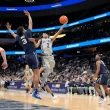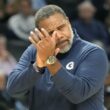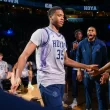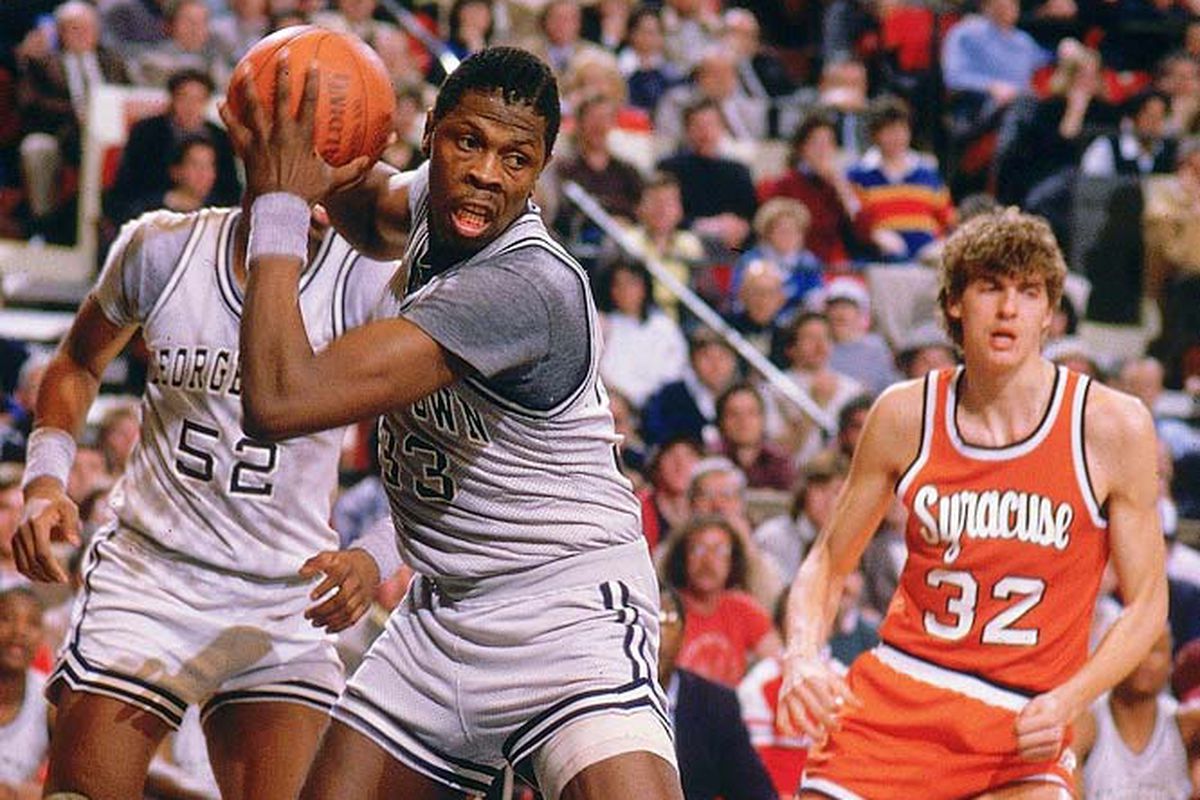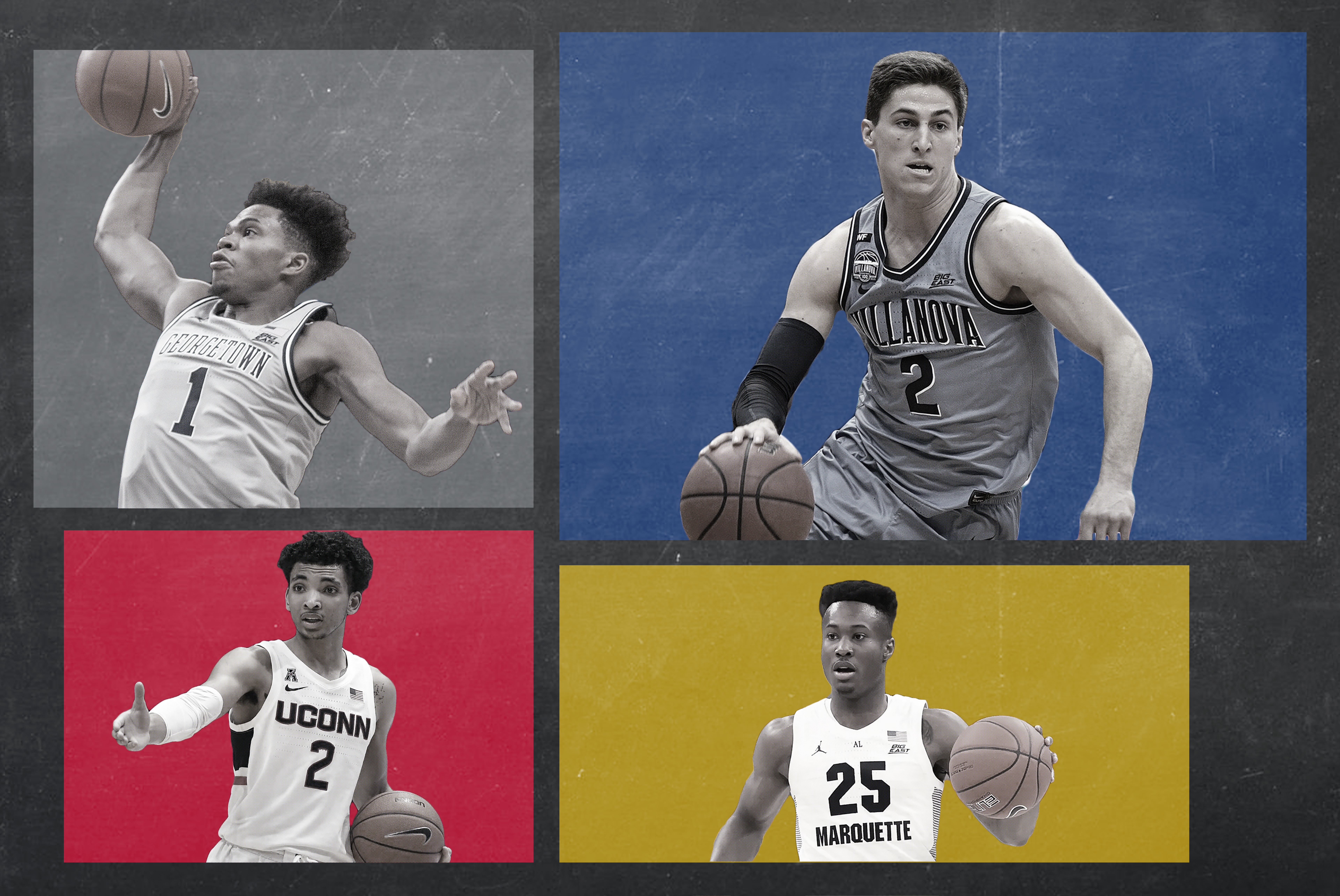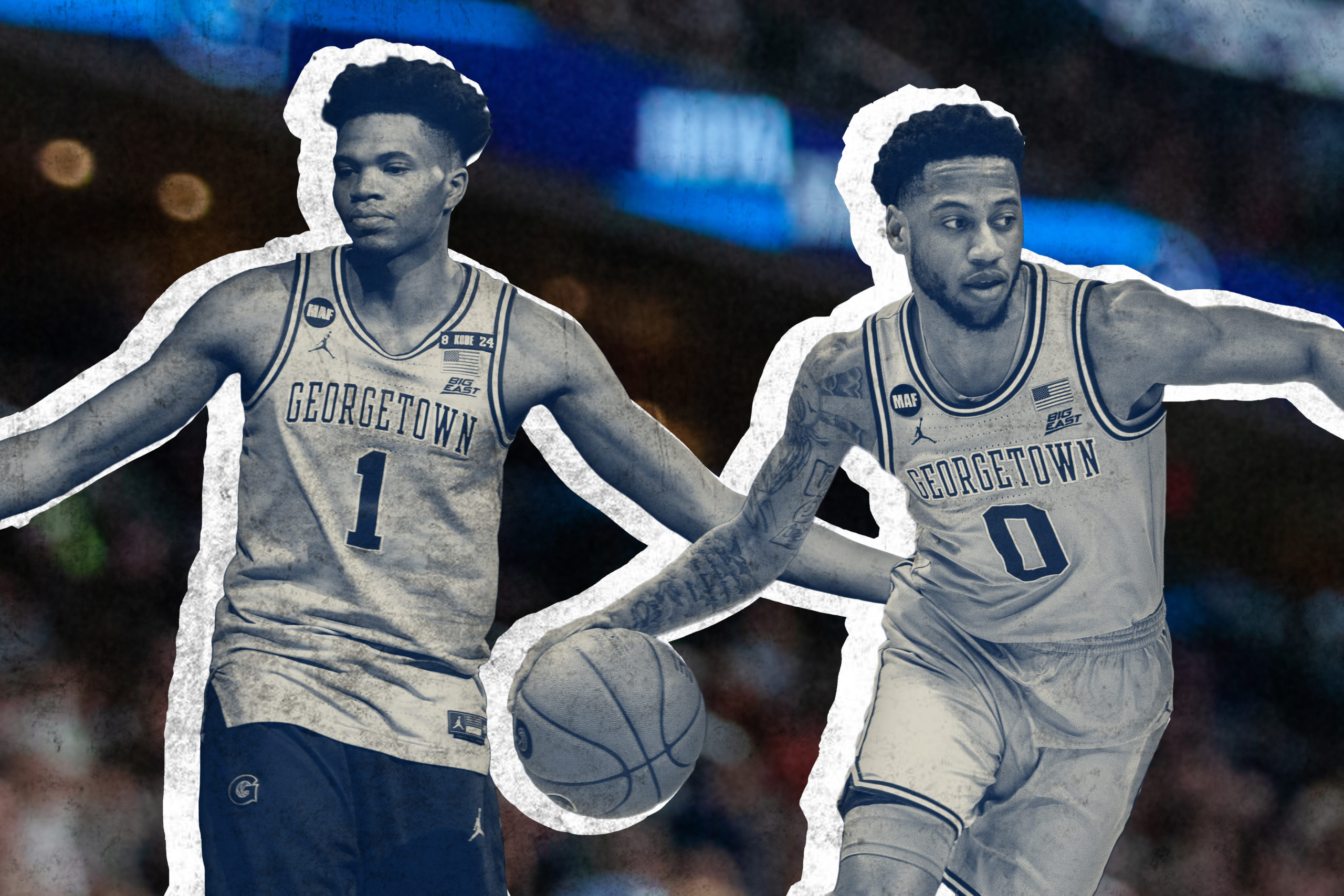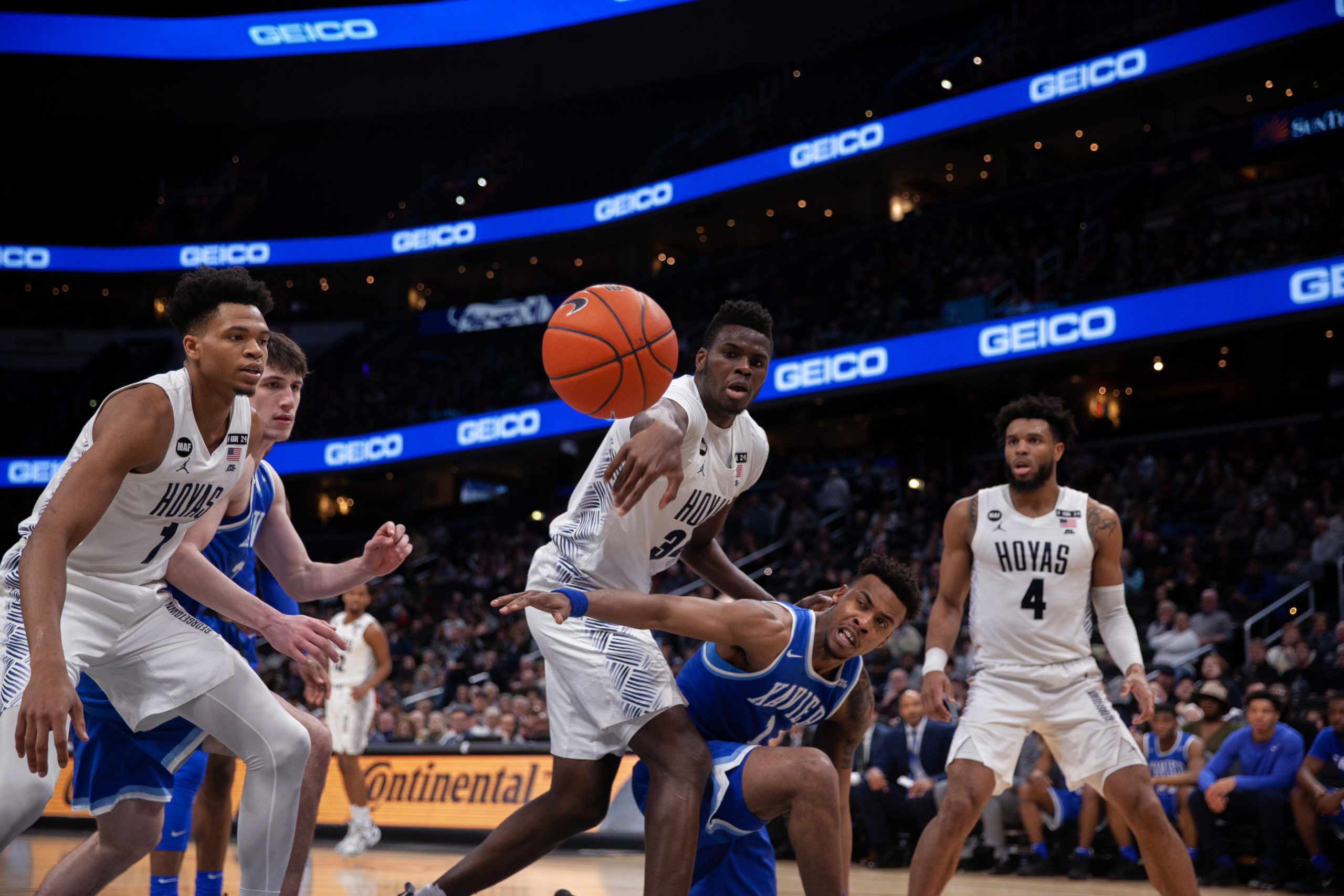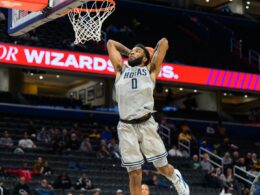Updated on December 10th, 2021 with more details and updated information.
So wait, why do we hate Syracuse?
This is a question some new Georgetown students will likely have, especially if you didn’t follow college basketball before arriving on the Hilltop. I’ll cop to having this question at one point.
As the Hoyas take on their rival Syracuse in their 97th meeting this Saturday, it’s worth giving the more casual fans among us a primer on the history of the rivalry so you can sound like an expert in your groupchats on Saturday morning. Plus, it gives me a reason to put my history major to use.
Get ready to dive in and learn about why we hate Syracuse (if that stupid mascot Otto the Orange wasn’t reason enough already).
Birth of a Rivalry
The first time that Syracuse and Georgetown met was on Saturday, February 15th, 1930 in Syracuse. The contest resulted in a victory for Syracuse, by the score of 40-18. In fact, the score was 31-5 until late in the second half, and Georgetown’s team captain made only two baskets. Yeah, basketball was different then.
Over the years, the Hoyas and Orange matched up several more times, including two matchups in 1974 and 1979.
The first feelings of animosity between the two teams actually began in that 1974 matchup, according to John Thompson Jr.’s autobiography.
At a tournament in 1974, one of [Syracuse’s] best players, Rudy Hackett, stood outside our locker room door as we walked in and tried to stare us down with a tough guy look on his face. That was the best thing he could have done, because my kids didn’t play that. When we got into the locker room, it was like, “You see what this motherfucker Hackett just did?” and we went out and upset them.
Excerpted from I Came As A Shadow, John Thompson Jr.’s autobiography
However, while the two teams held animosity towards one another privately, it wasn’t until 1980 that the Georgetown-Syracuse rivalry became embedded within the respective fanbases. It started when Syracuse and Georgetown joined the newly-created Big East Conference in 1979, meaning that they would play each other regularly. Both teams had coaches who were still fairly new-ish to leading their programs; Jim Boeheim, a former Syracuse player, was leading his alma mater, while John Thompson Jr. was working to turn the Georgetown basketball program into a force.
It was in this inaugural season of the Big East Conference that the rivalry began to blossom between both fanbases. On a cold February night in Syracuse the Hoyas were underdogs on the road. They were facing the Syracuse Orangemen (that was their name at the time) who were the #2 team in the country and riding a 57-game winning streak at home. The game to be played on that Tuesday night was going to be the last regular season game ever played at Syracuse’s basketball arena, Manley Field House.

It looked like Syracuse was headed for their 58th straight home victory as they led by as much as 15 points with 14 minutes to play. Some of the cocky Syracuse fans began to sing “Auld Lang Syne” from the stands, since it looked like Syracuse was going to give Georgetown a pasting for their last home game at Manley Field House.
Except it didn’t turn out that way.
Remarkably, the Hoyas managed to turn it around and ended up stunning #2 Syracuse in their last ever regular season game at Manley Field House, snapping their 57 game home winning streak.
What really made the rivalry become the rivalry though, was what was said after.
After the game, Georgetown Coach John Thompson Jr. declared that “Manley Field House is officially closed. May it rest in peace.”
That line enraged Syracuse fans and fired up the Georgetown faithful, and marked the public beginning of a rivalry.
In his autobiography, Thompson wrote, “People still talk about that quote. It wasn’t premeditated. I was just going from A to Z. Some people believe that remark created our Syracuse rivalry, but it actually began before then [at the 1974 tournament where Rudy Hackett stared down the Georgetown team]…[P]utting that stake through Syracuse’s heart in the last game at Manley Field House definitely added fuel to the fire. Over the years, Georgetown and Syracuse came to hate each other.”

Heyday in the 80s
Under their respective coaches, both Syracuse and Georgetown emerged as national forces during the 80s. Georgetown and Syracuse would meet twice (and sometimes even for a third time in the conference tournament) each season, and every game was a slugfest. After the closing of Manley Field House, six of the next eight games between Syracuse and Georgetown would end up being decided by five points or less. Both teams were powers within the Big East, with either Syracuse or Georgetown winning 8 of the first 10 Big East Tournament titles. In fact, over the course of the decade, Syracuse and Georgetown would meet in four different Big East Tournament Championship games, with the Hoyas winning all four games.

One of those contests was the 1984 Big East Tournament Championship game, which the Hoyas ended up winning. It was tinged with controversy however, as Georgetown player Michael Graham was accused of throwing a punch at a Syracuse player after he was elbowed in the jaw. Graham was only assessed one foul, meaning that Syracuse could only take two free throws (instead of four, if there had been a foul called on the punch). The game ended up going into overtime, with the Hoyas pulling out a win.
After the game, Jim Boeheim complained that “Michael Graham punched my player”, kicking a chair on his way out of the press conference.
On January 30th, 1985, the rivalry reared its ugly head. The game was held at the Carrier Dome, featuring #2 Georgetown (who were the defending national champions) and Syracuse. Syracuse fans (as well as fans at other schools) would regularly taunt Patrick Ewing with racist chants and signs, including calling him an “ape” and insulting his intelligence. At this particular game, people held up signs that read “Ewing can’t spell ESPN,” and someone threw a banana onto the court before the game.
The game got underway, and 3 minutes into the game Ewing was taking free throws for Georgetown. A Syracuse fan threw an orange from the stands that hit the backboard, and Coach Thompson took his players off the court. Jim Boeheim took a microphone to address the stands, and told them to stop throwing things, or else Syracuse would forfeit.
The rest of the game continued, and #2 Georgetown held the lead. However, in the waning seconds of the game, Syracuse star Pearl Washington hit a jumper that won the game and stunned the Hoyas.
During this decade, both the Hoyas and Syracuse were college basketball powers. Both teams made multiple appearances in the NCAA tournament, and the Hoyas won it all in 1984, led by star center Patrick Ewing.

The 1980s was when both programs were at the peak of their success, not only within the Big East, but nationally too. During this decade, the Hoyas made the NCAA tournament every year and advanced to at least the second round every year, save for the 1980-81 season. In addition, Georgetown went to three NCAA championship games led by Ewing, winning it all in 1984. For their part, Syracuse made the NCAA tournament every year too, with the exceptions of the 1980-81 and 1981-82 seasons, in addition to being the national runner-up in 1987.
Both teams were also often ranked in the top ten at various points during this decade, in addition to often being the best teams in the Big East Conference. The 80s gave the rivalry its share of heated moments, with each game being a slugfest (sometimes literally).
It was because both teams were so good at the same time that made it such a heated rivalry, and events like “Manley Field House is officially closed” only served to add fuel to the fire within both fanbases.
Continuation of a Rivalry and Drifting Apart
During the 1990s, the rivalry continued.
Another iconic moment came in 1990, when John Thompson Jr. received three consecutive technical fouls. He got the first after complaining about a dubious call on a Georgetown player, the second for stepping out of the coaches’ box, and the third for going onto the court. As he left the Carrier Dome, he sarcastically waved goodbye to the crowd.
The Hoyas went on to eventually lose the game in overtime.
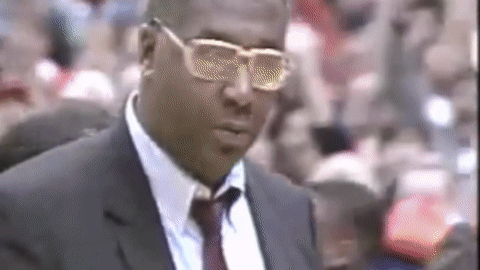
Over the course of the 90s, the rivalry stayed fresh as Georgetown had talent like Allen Iverson and continued its string of success, making either the NCAA tournament or the NIT every year that decade.
Midway through the 1998-1999 season, Georgetown’s legendary head coach John Thompson Jr. announced his surprise resignation as head coach in order to deal with his personal life. His longtime assistant Craig Esherick took over as head coach.
During the 2000s, the rivalry wasn’t as heated as Georgetown struggled at the beginning of the century under head coach Craig Esherick and Syracuse was on top, winning the national championship in 2002.
However, a sweet moment for Hoyas fans came in 2002, as the Hoyas spoiled the dedication of Syracuse’s basketball court to Jim Boeheim, winning the game 75-69.
The rivalry got another injection of energy when the son of John Thompson Jr., John Thompson III (also known as JTIII), was announced as head coach. Another Thompson on the sidelines brought an injection of energy into the rivalry, particularly as the Hoyas and ‘Cuse matched up 10 times over the course of his tenure when both teams were ranked in the top 25.
The rivalry was dealt a massive blow in 2011 when Syracuse announced that they would be leaving the Big East to join a different conference, the ACC. The politics of conference realignment are difficult to explain, but the departure of Syracuse was part of the business of college sports, tied to Syracuse’s desire for more money and a focus on football.
In Syracuse’s last game against Georgetown at the Carrier Dome as a member of the Big East, JTIII’s Hoyas managed to snap a 38-game Syracuse home game winning streak. Like father, like son.
Georgetown stayed in the Big East, joining the conference as it was reconfigured. However, it wasn’t the same.

The Rivalry Today
Syracuse is still in the ACC, and as such doesn’t match up nearly as often with its old Big East rivals like Georgetown and UConn. Georgetown is in the new Big East, a league which has recommitted to the basketball roots of the old Big East.

Since conference realignment when Syracuse jumped ship to the ACC, Syracuse and Georgetown have played each other every year (save for the first season after realignment), and in the spring of 2019 the two programs committed to playing each other once a year through the 2022-23 season.
The matchups since realignment have been thrilling, even when there was a skill imbalance between the teams. Georgetown won the first two games post-realignment, then Syracuse won the next two, defeating Georgetown in D.C. in a heartbreaker in overtime in Patrick Ewing’s first year as head coach, as well as beating the Hoyas in Ewing’s first game back at the Carrier Dome thanks to a last second heave from Tyus Battle. In 2019, the Hoyas steamrolled Syracuse 89-79 at Capital One to notch Patrick Ewing’s first win over the Orange as a head coach. Last year, the Hoyas and the Orange were able to continue the series even as COVID altered schedules of college basketball programs. Playing in an empty Carrier Dome, Georgetown lost a heartbreaker, 74-69, despite a valiant comeback attempt.
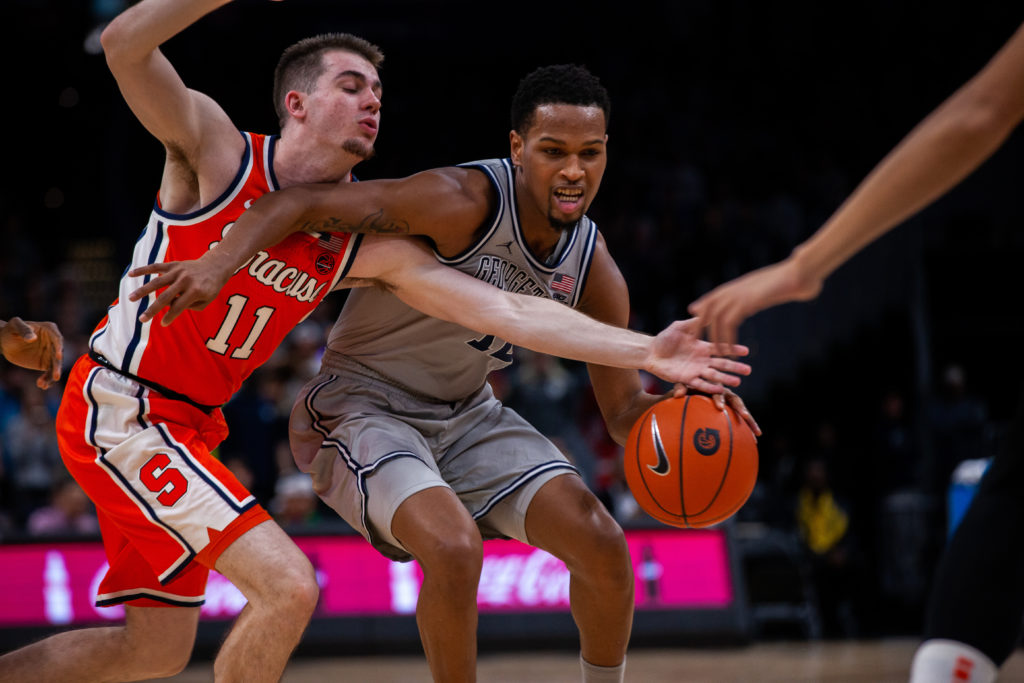
In addition, the games have still brought out a lot of passion in both fanbases, such as the time when Georgetown fans created a banner mocking Jim Boeheim as Boeheim began to serve a 9-game suspension (in addition to having 108 wins vacated) for failing to promote compliance with NCAA rules within his program for nearly a decade.
The game still means a lot to the players, as evidenced by what Georgetown starting guard Jagan Mosely had to say before the last game played in Washington DC:
Jim Boeheim is still coaching Syracuse, and Patrick Ewing has gone from playing against Boeheim’s teams in the 80s to coaching against him. With this rivalry, the past is still a part of the present, which is what makes it so special.
Although the rivalry doesn’t have the intensity and venom that it did in the 80s, it’s still a historic rivalry that’s had over 40 years of history building up to it. Each game in the renewed rivalry has been a thriller, and despite what either fanbase might tell you, they still actually care a whole lot about who wins on that rivalry weekend.
Hoya Saxa, and let’s juice ‘Cuse!
